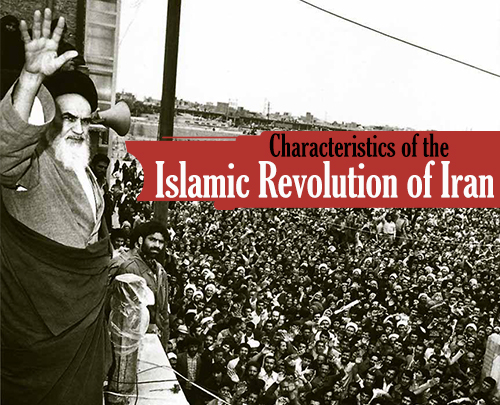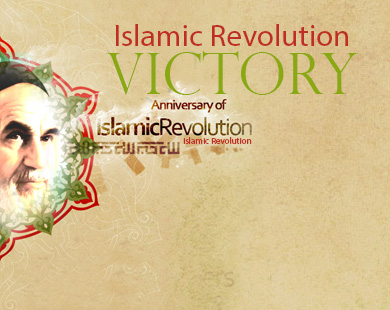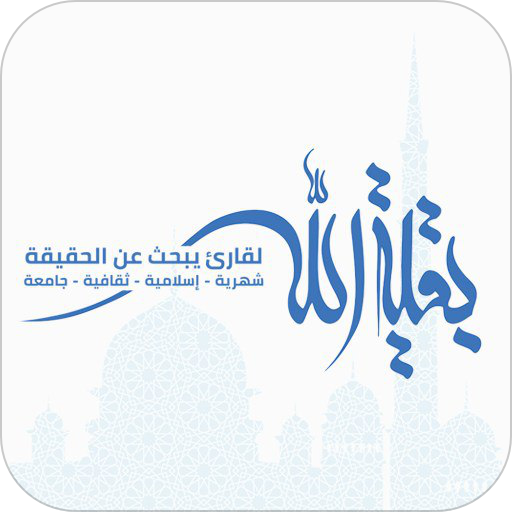After his arrival in Qum in 1922 or 1923, the Imam first devoted himself to completing the preliminary stage of madrasa education known as sutuh; this he did by studying with teachers such as Shaykh Muhammad Riza Najafi Masjid-i Shahi, Mirza Muhammad Taqi Khwansari, and Sayyid ‘Ali Yasribi Kashani. However, from his early days in Qum, the Imam gave an indication that he was destined to become more than another great authority on Ja’fari jurisprudence. He showed an exceptional interest in subjects that not only were usually absent from the madrasa curriculum, but were often an object of hostility and suspicion: philosophy, in its various traditional schools, and Gnosticism (‘irfan). He began cultivating this interest by studying the Tafsir-i Safi, a commentary on the Qur’an by the Sufistically-inclined Mullah Muhsin Fayz-i Kashani (d.1091/1680), together with the late Ayatullah ‘Ali Araki (d. 1994), then a young student like himself. His formal instruction in gnosticism and the related discipline of ethics began with classes taught by Hajji Mirza Javad Maliki-Tabrizi, but this scholar died in 1304/1925. Similarly, the Imam was not able to benefit for long from his first teacher in philosophy, Mirza ‘Ali Akbar Hakim Yazdi, a pupil of the great master Mullah Hadi Sabzavari (d.1295/1878), for Yazdi passed away in 1305/1926. Another of the Imam’s early instructors in philosophy was Sayyid Abu ‘l-Hasan Qazvini (d. 1355/1976), a scholar of both peripatetic and illuminationist philosophy; the Imam attended his circle until Qazvini’s departure from Qum in 1310/1931.
The teacher who had the most profound influence on Imam Khumayni’s spiritual development was, however, Mirza Muhammad ‘Ali Shahabadi (d. 1328 Sh. /1950); to him the Imam refers in a number of his works as shaykhuna and ‘arif-I kamil, and his relationship with him was that of a murid with his murshid. When Shahabadi first came to Qum in 1307 Sh. /1928, the young Imam asked him a question concerning the nature of revelation, and was captivated by the answer he received. At his insistent request, Shahabadi consented to teach him and a few other select students the Fusus al-Hikam of Ibn ‘Arabi. Although the basis of instruction was Da’ud Qaysari’s commentary on the Fusus, the Imam testified that Shahabadi also presented his own original insights on the text. Among the other texts that Imam Khumayni studied with Shahabadi were the Manazil al-Sa’irin of the Hanbali Sufi, Khwaja ‘Abdullah Ansari (d.482/1089), and the Misbah al-Uns of Muhammad b. Hamza Fanari (d. 834/1431), a commentary on the Mafatih al-Ghayb of Sadr al-Din Qunavi (d. 673/1274).
It is conceivable that the Imam derived from Shahabadi, at least in part, whether consciously or not, the fusion of gnostic and political concerns that came to characterize his life. For this spiritual master of the Imam was one of the relatively few ulama in the time of Riza Shah to preach publicly against the misdeeds of the regime, and in his Shadharat al-Ma’arif, a work primarily gnostic in character, described Islam as “most certainly a political religion.”1
Gnosis and ethics were also the subject of the first classes taught by the Imam. The class on ethics taught by Hajji Javad Aqa Maliki Tabrizi were resumed, three years after his death, by Shahabadi, and when Shahabadi left for Tehran in 1936, he assigned the class to Imam Khumayni. The class consisted in the first place of a careful reading of Ansari’s Manazil al- Sa’irin, but ranged beyond the text to touch on a wide variety of contemporary concerns. It proved popular to the extent that the townsfolk of Qum as well as the students of the religious sciences attended, and people are related to have come from as far a field as Tehran and Isfahan simply to listen to the Imam. This popularity of the Imam’s lectures ran contrary to the policies of the Pahlavi regime, which wished to limit the influence of the ulama outside the religious teaching institution. The government therefore secured the transfer of the lectures from the prestigious location of the Fayziya madrasa to the Mullah Sadiq madrasa, which was unable to accommodate large crowds. However, after the deposition of Riza Shah in 1941, the lectures returned to the Fayziya madrasa and instantly regained their former popularity. The ability to address the people at large, not simply his own colleagues within the religious institution, which the Imam displayed for the first time in these lectures on ethics, was to play an important role in the political struggles he led in later years.
While teaching ethics to a wide and diverse audience, Imam Khumayni began teaching important texts of gnosis, such as the section on the soul in al-Asfar al-Arba’a of Mullah Sadra (d. 1050/1640) and Sabzavari’s Sharh-I Manzuma, to a select group of young scholars that included Murtaza Mutahhari and Husayn ‘Ali Muntaziri, who subsequently became two of his principal collaborators in the revolutionary movement he launched some three decades later.
As for the earliest writings of the Imam, they also indicate that his primary interest during his early years in Qum was gnosis. In 1928, for example, he completed the Sharh Du’a’ al-Sahar, a detailed commentary on the supplicatory prayers recited throughout Ramadan by Imam Muhammad al-Baqir; as with all Imam Khumayni’s works on gnosis, the terminology of Ibn ‘Arabi is frequently encountered in this book. Two years later, he completed Misbah al-Hidaya ila ‘l-Khilafa wa ‘l-Wilaya, a dense and systematic treatise on the main topics of gnosis. Another product of the same years of concentration on gnosis was a series of glosses on Qaysari’s commentary on the Fusus.
In a brief autobiography written for inclusion in a book published in 1934, the Imam wrote that he spent most of his time studying and teaching the works of Mullah Sadra; that he had for several years been studying gnosis with Shahabadi; and that at the same time he was attending the classes of Ayatullah Ha’iri on fiqh.2
The sequence of these statements suggests that fiqh was as yet secondary among his concerns. This situation was to change, but gnosis was for the Imam never simply a topic for study, teaching, and writing. It remained an integral part of his intellectual and spiritual personality, and as such infused many of his ostensibly political activities in later years with an unmistakably gnostic element.
The Imam did not engage in any overt political activities during the 1930’s. He always believed that the leadership of political activities should be in the hands of the foremost religious scholars, and he was therefore obliged to accept the decision of Ha’iri to remain relatively passive toward the measures taken by Riza Shah against the traditions and culture of Islam in Iran. In any event, as a still junior figure in the religious institution in Qum, he would have been in no position to mobilize popular opinion on a national scale. He was nonetheless in contact with those few ulama who did openly challenge Riza Shah, not only Shahabadi, but also men such as Hajji Nurullah Isfahani, Mirza Sadiq Aqa Tabrizi, Aqazada Kifai, and Sayyid Hasan Mudarris. He expressed his own opinions of the Pahlavi regime, the leading characteristics of which he identified as oppression and hostility to religion, as yet only allusively, in privately circulated poems.3
He assumed a public political stance for the first time in a proclamation dated 15 Urdibihisht 1323/ 4 May 1944 that called for action to deliver the Muslims of Iran and the entire Islamic world from the tyranny of foreign powers and their domestic accomplices. The Imam begins by citing Qur’an, 34:46 (“Say: ‘I enjoin but one thing upon you, that you rise up for Allah, in pairs and singly, and then reflect’”). This is the same verse that opens the chapter on awakening (bab al-yaqza) at the very beginning of Ansari’s Manazil al-Sa’irin, the handbook of spiritual wayfaring first taught to the Imam by Shahabadi. The Imam’s interpretation of “rising up” is, however, both spiritual and political, both individual and collective, a rebellion against lassitude in the self and corruption in society.
The same spirit of comprehensive revolt inspires the first work written by the Imam for publication, Kashf al-Asrar (Tehran, 1324 Sh. /1945). He is said to have completed the book in forty-eight days from a sense of urgency, and that it indeed met a need is proven by the fact that it went through two impressions in its first year. The principal aim of the book, as reflected in its title, was to refute ‘Ali Akbar Hakamizada’s Asrar-i Hazarsala, a work calling for a “reform” of Shi’i Islam. Similar attacks on Shi’i tradition were being made in the same period by Shari’at Sanglaji (d.1944), an admirer of Wahhabism despite that sect’s marked hostility to Shi’ism, and Ahmad Kasravi (d. 1946), competent as a historian but mediocre as a thinker. The Imam’s vindication of such aspects of Shi’i practice as the mourning ceremonies of Muharram, pilgrimage (ziyara) to the tombs of the Imams, and the recitation of the supplicatory prayers composed by the Imams, was therefore a response to the criticisms made by all three. Imam Khumayni connected their assaults on tradition with the anti-religious policies of Riza Shah and bitterly criticized the Pahlavi regime for destroying public morality. He stopped short, however, of demanding the abolition of the monarchy, proposing instead that an assembly of competent mujtahids should choose “a just monarch who will not violate God’s laws and will shun oppression and wrongdoing, who will not transgress against men’s property, lives, and honor.”4
Even this conditional legitimacy of monarchy was to last “only so long as a better system could not be established.”5 There can be no doubt that the “better system” already envisaged by Imam Khumayni in 1944 was vilayat-i faqih, which became the constitutional cornerstone of the Islamic Republic of Iran established in 1979.
When Shaykh ‘Abd al-Karim Ha’iri died in 1936, the supervision of the religious institution in Qum had been jointly assumed by Ayatullah Khwansari, Ayatullah Sadr, and Ayatullah Hujjat. A sense of lack was nonetheless felt. When Ayatullah Abu ‘l- Hasan Isfahani, the principal marja’-i taqlid of the age residing in Najaf, died in 1946, the need for a centralized leadership of Shi’i Muslims became more felt more acutely, and a search began for a single individual capable of fulfilling the duties and functions of both Ha’iri and Isfahani. Ayatullah Burujirdi, then resident in Hamadan, was seen to be the most suitable person available, and Imam Khumayni is said to have played an important role in persuading him to come to Qum. In this he was no doubt motivated in part by the hope that Burujirdi would adopt a firm position vis-a-vis Muhammad Riza Shah, the second Pahlavi ruler. This hope was to remain largely unfulfilled. In April 1949, Imam Khumayni learned that Burujirdi was engaged in negotiations with the government concerning possible emendations to the constitution then in force, and he wrote him a letter expressing his anxieties about the possible consequences. In 1955, a nationwide campaign against the Baha’i sect was launched, for which the Imam sought to recruit Burujirdi’s support, but he had little success. As for religious personalities who were militantly active in the political sphere at the time, notably Ayatullah Abu ‘l-Qasim Kashani and Navvab Safavi, the leader of the Fida’iyan-i Islam, the Imam’s contacts with them were sporadic and inconclusive. His reluctance for direct political involvement in this period was probably due to his belief that any movement for radical change ought to be led by the senior echelons of the religious establishment. In addition, the most influential personage on the crowded and confused political scene of the day was the secular nationalist, Dr. Muhammad Musaddiq.
Imam Khumayni therefore concentrated during the years of Burujirdi’s leadership in Qum on giving instruction in fiqh and gathering round him students who later became his associates in the movement that led to the overthrow of the Pahlavi regime, not only Mutahhari and Muntaziri, but younger men such as Muhammad Javad Bahonar and ‘Ali Akbar Hashimi-Rafsanjani. In 1946, he began teaching usul al-fiqh at the kharij level, taking as his text the chapter on rational proofs from the second volume of the Kifayat al-Usul of Akhund Muhammad Kazim Khurasani (d. 1329/1911). Initially attended by no more than thirty students, the class became so popular in Qum that five hundred were in attendance the third time it was offered. According to the reminiscences of some of those who took the class, it was distinguished from other classes taught in Qum on the same subject by the critical spirit the Imam instilled in his students, as well as his ability to connect fiqh with all the other dimensions of Islam - ethical, gnostic, philosophical, political, and social.
* Imam Khomeini: A Short Biography. By: Hamid Algar. Published by: The Institute for Compilation and Publication of Imam Khomeini's Works (International Affairs Department)
1- Shadharat al-Ma’arif, Tehran, 1360 Sh./1982, pp. 6-7.
2- Sayyid ‘Ali Riza Yazdi Husayni, Aina-yi Danishvaran, Tehran, 1353/1934, pp. 65-7.
3- Sayyid Hamid Ruhani, Barrasi va Tahlili az Nahzat-I Imam Khumayni, I, Najaf, n.d., pp. 55-9.
4- Kashf al-Asrar, p. 185.
5- Kashf al-Asrar, p. 186.


















